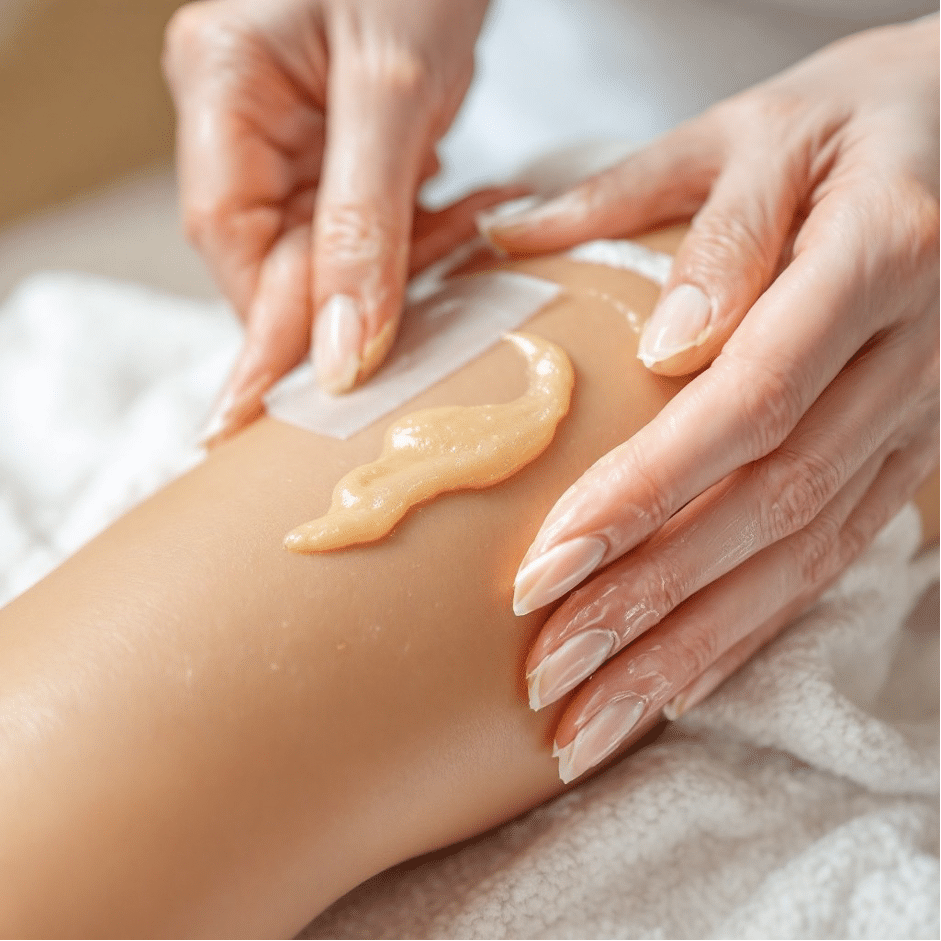Pregnancy is a beautiful and unique experience, but it does come with plenty of changes and challenges. One of them is hair growth.
Since your body will be producing more hormones, some of these hormones will influence shifts in how your body functions. You may notice that your hair is thicker and shinier, but you also may see hair on body parts where you never saw it before (like your belly, back, etc.).
So, what are some safe hair removal methods in pregnancy? More about that in today’s article.
Why Does Hair Growth Change During Pregnancy?
Here’s the thing. Pregnancy affects your hormone levels (especially estrogen and progesterone), and they affect hair growth. That’s why your hair feels thicker and fuller and your scalp becomes oilier.
85% to 95% of the hair on your head is growing, and the other 5 to 15% is in a resting stage. After the resting period, this hair naturally falls out and is replaced by new hair.
Estrogen prolongs the growth phase of hair, which means less hair falls out. This makes your hair thicker and often shinier.
Progesterone can make your scalp and skin oilier, and this directly affects the texture of your hair and makes it stronger. It also increases hair growth on your body in places where you didn’t have much before (like your belly, face, or back).
Androgens (a group of steroid hormones that includes testosterone) also increase facial and body hair growth.

How to Remove Body Hair During Pregnancy?
Here’s how to remove unwanted hair during pregnancy:
1. Shaving
Shaving is one of the simplest and safest ways to remove body hair when you’re pregnant. It’s quick, easy, and doesn’t involve chemicals. However, as your belly grows, reaching certain areas might become tricky. And remember that if you shave regularly, your body hair does come back stronger and thicker.
Always use shaving cream or gel to protect your skin and shave in the direction of hair growth to reduce irritation.
2. Waxing and Sugaring
Waxing and sugaring (using a sticky sugar-based paste) are great options for hair removal during pregnancy. These methods pull hair from the root, which gives you better and longer-lasting results. However, pregnancy can make your skin more sensitive, so waxing might feel more painful than usual. Always check with your doctor if you have any skin conditions or concerns.
3. Plucking
Plucking is perfect for smaller areas like eyebrows or facial hair and is safe to do while you’re pregnant.
4. Hair Removal Creams
A lot of hair removal creams have chemicals like calcium thioglycolate or potassium hydroxide. They dissolve hair at the skin’s surface. While they’re easy to use and convenient, their strong smell and chemical content can irritate your skin during pregnancy.
You can always do a patch test on a small part of your body or consult your doctor before using these products.

5. Laser Hair Removal
It’s best to stay as informed as you can on the connection between pregnancy and laser hair removal. Since hormonal changes during pregnancy can influence hair growth, this can affect your pre-pregnancy treatments.
There’s limited research on the effects of laser hair removal for pregnant women, and hormonal changes can make your skin more sensitive, which increases the risk of unexpected reactions. That’s why most doctors advise waiting until after delivery to start or continue laser treatments.
6. Electrolysis
Electrolysis, which uses an electric current to destroy hair follicles, is another method with not enough safety data for pregnant women. It’s best to wait this one out until after you give birth.
Tips for Managing Body Hair During Pregnancy
So, now that we’ve gone over the best hair removal methods during pregnancy, here are some extra tips for managing body and hair growth:
- Stay moisturized: Hormonal changes can make your skin drier or oilier, so using a good moisturizer can help keep your skin feel more comfortable and reduce irritation when shaving or waxing.
- Exfoliate gently: Exfoliating before shaving or waxing can help prevent ingrown hairs. Use a gentle body scrub to avoid irritating your skin.
- Be patient: Most of the extra hair growth will go away after you give birth, so try to be kind to yourself and remember that it’s just a phase.
Can Pregnancy Cause Hair Loss?
A lot of women experience hair loss at the early stages of pregnancy and after they give birth. Metabolic stress at the beginning of your pregnancy can cause something called telogen, and this causes hair loss, however, it’s not always the case.
Many women are surprised by how much hair falls out after giving birth. This is known as postpartum hair shedding and is completely normal. It happens because your estrogen levels fall down after you have your baby. It can feel dramatic, but your hair will typically return to its pre-pregnancy state within a few months to a year.

How to Cope with Hair Loss During and After Pregnancy
Here are some tips on how to deal with losing hair while you’re pregnant and after you give birth:
- Use a gentle shampoo and conditioner: Avoid harsh products with a lot of chemicals and go for more natural formulas that strengthen hair.
- Avoid heat styling: Limit the use of hot tools like straighteners or curling irons to reduce breakage. You can use heatless methods if you want to curl your hair.
- Eat healthy: Having a healthy diet is super important, especially when you’re expecting. Eat foods that are rich in magnesium and B vitamins for hair health.
- Take a break to de-stress: Lowering your cortisol levels will always help your hair. Find the time and do something you love, even if it’s just for 10-15 minutes a day.
- Consider a haircut: A shorter style can make hair look fuller and healthier while you wait for the postpartum shedding to slow down. Of course, if this is a look you would usually go for and that suits you.
Final Thoughts on the Effects of Pregnancy on Hair Growth
There you have it, guys. That was it for today’s article. While you may see and feel many changes in your body while you’re expecting, remember to always be kind to yourself.
There are a lot of hormones rushing through your body, so just take it one step at a time. Thankfully, there are plenty of safe hair removal methods to choose from, and most of the changes you’re experiencing are temporary.
After pregnancy, your hair growth patterns will begin to return to normal. Until then, embrace the process, and don’t hesitate to talk to your doctor if you have any concerns or uncertainties. We hope we’ve shared some helpful tips. Until next time.
